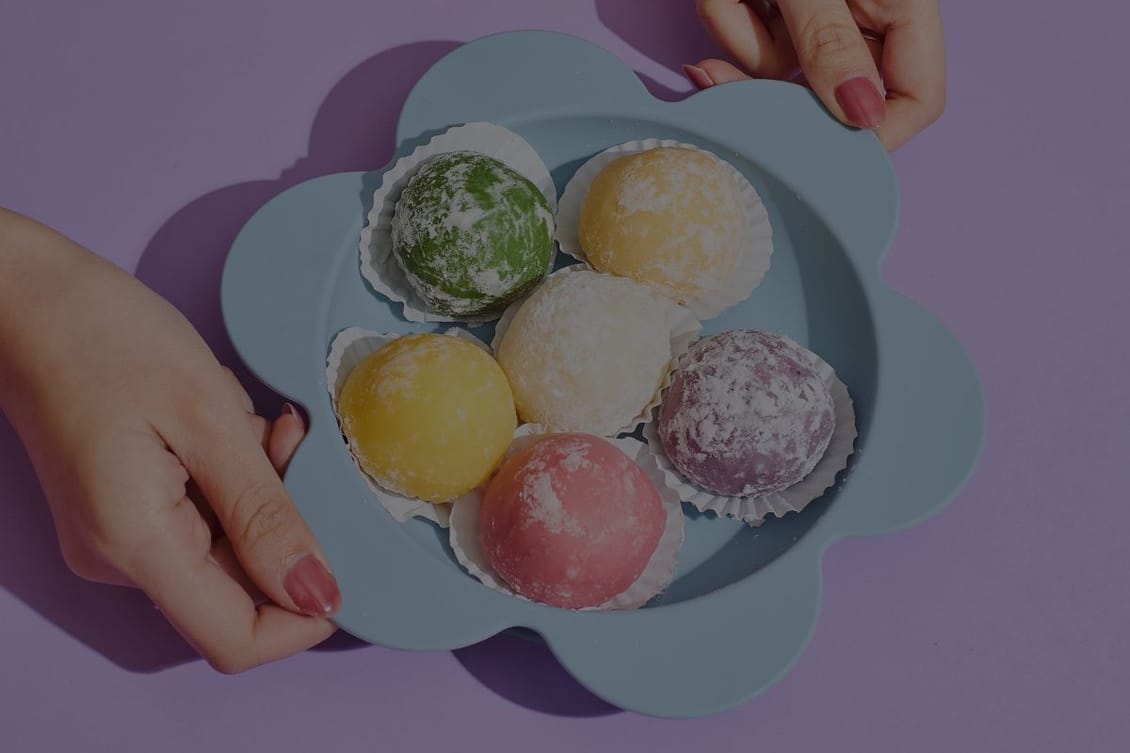
If you’re not hiding your ice cream in rice, you’re missing out.
Rice has been a staple part of diets for some populations for thousands of years. In the right conditions it’s easy to grow and produce, making it a valuable food source for the world’s rapidly increasing population.
And as we explored recently when we wrote about rice cakes, it’s also very versatile.
But is it versatile enough to add to our ice cream? Yes, absolutely – and more and more markets around the world are adopting this trend in the form of mochi.
Mochi are pleasing spheres of ice cream, perfectly wrapped in sweet, sticky mochi rice. Originally from Japan, mochi has become a global food sensation – going viral across social media so that stores and online retailers are struggling to keep up with demand.
Popular mochi ice cream brand Little Moons saw a 700% surge in sales at UK-based grocery chain Tesco in just one week as a result of the mochi TikTok trend. Howard Wong (Co-Founder of Little Moons) told The Grocer, “It’s a testament to the potential of TikTok to exponentially grow awareness of an FMCG brand almost overnight.”
According to Wong, it was a combination of a clever marketing strategy and a strong understanding how the different social media platforms work, along with getting influencers to post about their product, that helped the brand achieve over 100 million views.
But although it’s hit the global mainstream on social media, mochi isn’t new. And before it started making record sales in supermarkets, it had more humble beginnings – without ice cream.
Dating back as far as the birth of rice farming, mochi has long had a place in Japanese culture and history.
It wasn’t until the Nara period that mochi started to adopt the famous spherical shape that’s fast becoming familiar around the world. But as time went on, mochi was reserved for high society people and celebratory occasions. Fast forward another 500 years, and it was becoming more common to see mochi eaten by the masses.
Throughout history to today, the art of making mochi still brings people together – and it remains a part of cultural celebrations, including the Japanese New Year.
Families and friends unite to take part in mochitsuki – the process of making mochi – which translates as ‘pounding mochi’.
Making mochi is hard work, demanding physical effort and plenty of patience.
Mochi starts as a heavy, dense, short-grain rice that is soaked before embarking on a process that takes several days and multiple people. It goes through rigorous pounding and baking in a giant pestle and mortar called an usu.
One person maintains a strong pounding rhythm while the other works in unison to constantly turn the dough. Once sticky to the touch, the rice is carved into bite size domes ready to be made into mochi.
In Kyoto, Japan, one family-run business has been selling toasted mochi for over 1,000 years – surviving generations of adversity.
(Interesting side note – a study by the Research Institute of Centennial Management found that more than 52,000 businesses in Japan are over a century old, and 19 of them have been in operation since the first millennium).
And over time, mochi has been adapted to suit changing tastes – and paired with other foods, like ice cream.
The concept of wrapping ice cream with mochi was actually part of an effort to make ice cream more appealing to Japanese people, who preferred lower sugar desserts. By the 1990s mochi ice cream had made its way to America; and from there, its popularity grew across new regional markets.
Mochi isn’t a passing trend. Steeped in tradition, its place in Japanese culture will hold firm.
But what about mochi ice cream? And has social media virality given mochi a global future, instead of a local one?
In 2023, the mochi market was valued at USD $381 million. It’s expected to grow at a CAGR of 6.2% until 2031, when it’ll reach $5536 million.
Since mochi ice cream’s big boom onto the scene a few years ago, dedicated mochi ice cream parlours have cropped up across the globe. We spotted M’oishi: the Middle East’s first mochi parlour, which has expanded to 13 franchised concept cafes across the UAE – with plans to grow even more.
And whether you care about ice cream in rice or not, all of this points to one key reality that all F&B brands should take note of in 2024: when you get digital marketing right, you can transform markets – expanding product awareness, driving product education, and generating sales that can catapult a trend across the world.
Take your seat at the InFlavour table, a government-backed and world-leading B2B food event by Tahaluf.
E-mail address SubmitWant to keep up to date with all our latest news and information? Enter your name below to be added to our mailing list.
E-mail address Submit